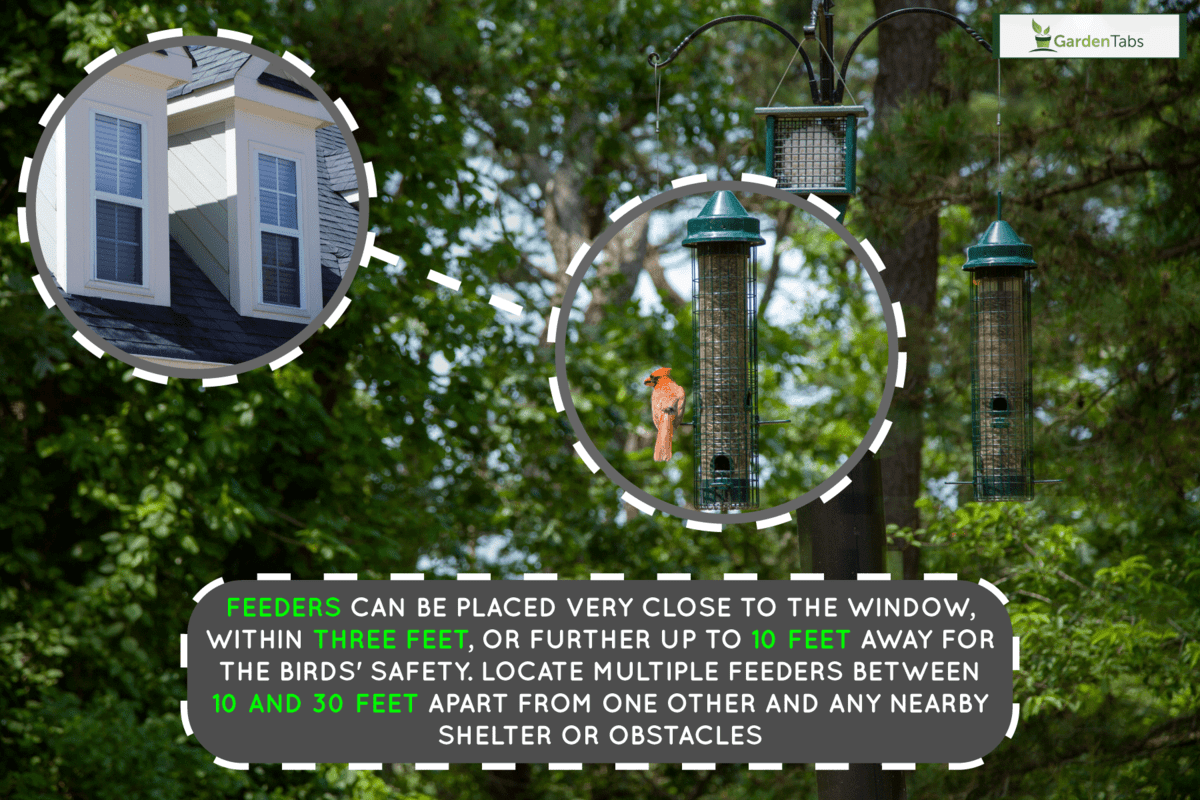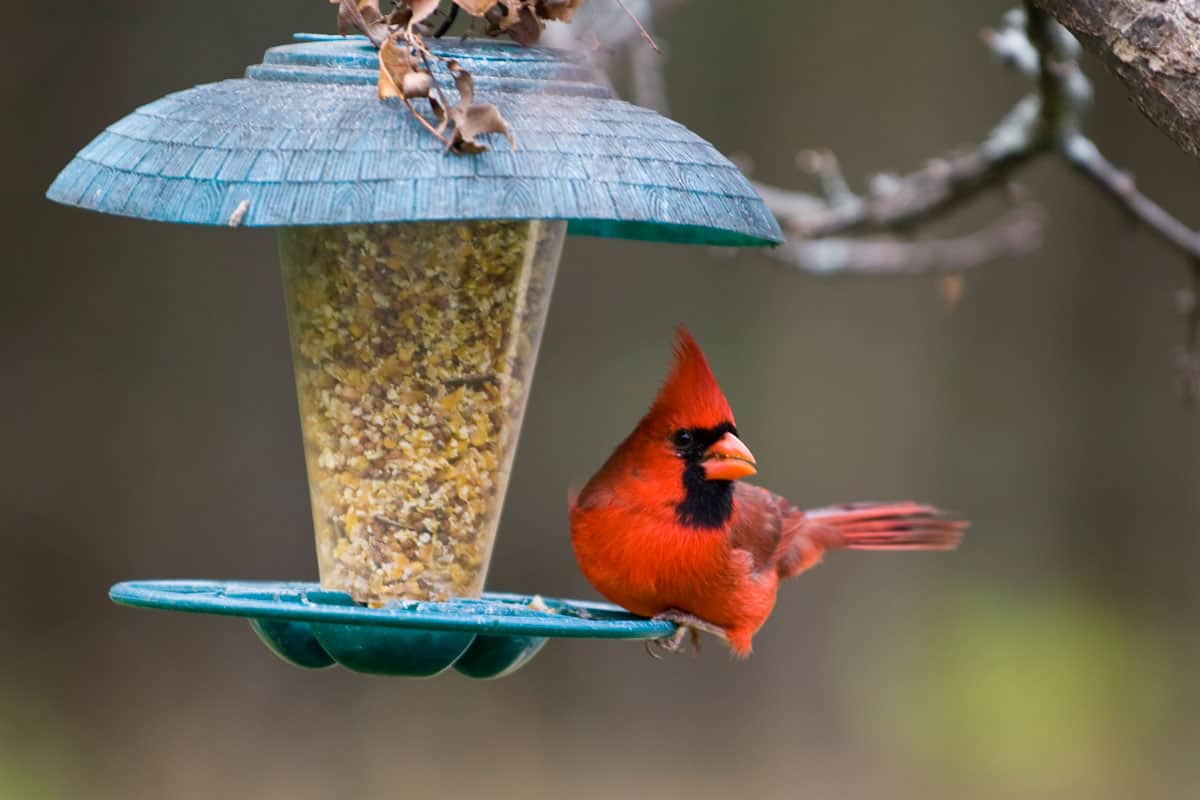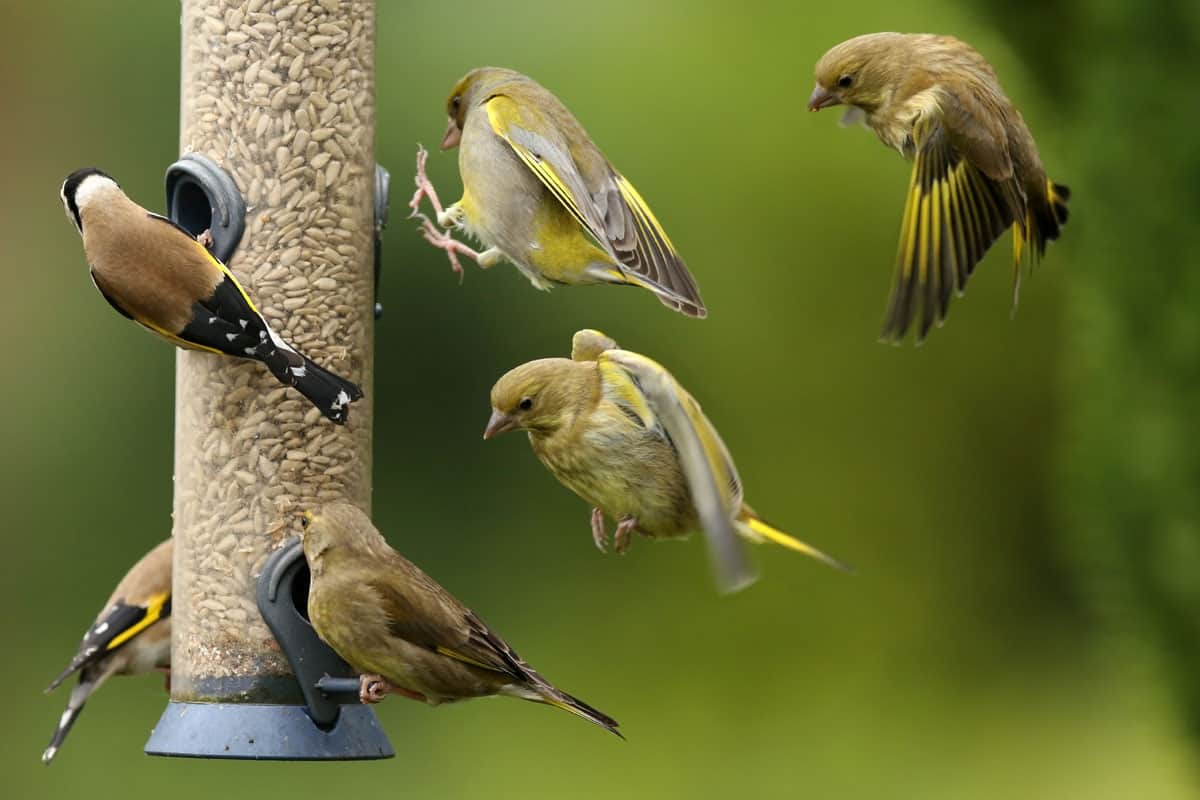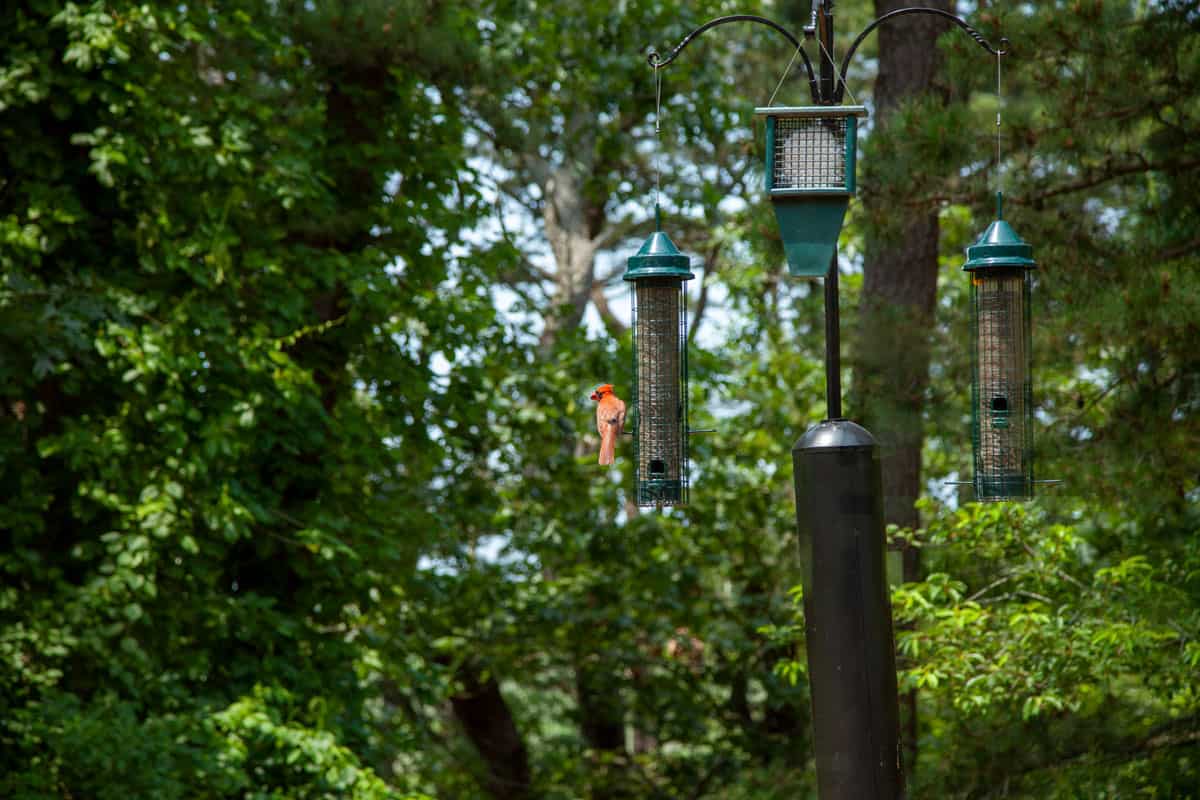It is important to keep bird feeders out of reach of squirrels who could jump, climb, or dangle to reach for food. You should position the feeder so the birds have a reasonably short flight away from cover in order to provide them with a safe haven. Keeping all this in mind, how far apart should you place your bird feeders? Here's what we gathered after thorough research.
Feeders can be placed very close to the window, within three feet, or further up to 10 feet away for the birds' safety. Locate multiple feeders between 10 and 30 feet apart from one other and any nearby shelter or obstacles (windows, trees, poles, buildings, wood piles, etc.).
This creates a safe distance between two or more feeders for birds to graze comfortably.
There is more to consider while building bird feeders apart from a distance. Keep reading this article to learn more.

Where Should You Put Your Bird Feeder?
The placement of bird feeders in close proximity to natural covers, such as trees or shrubs, provides birds with a place to rest in between feeding sessions as well as a safe harbor in case a hawk passes nearby.
Evergreen trees are great locations because their dense foliage acts as a windbreak during the winter and provides cover from potential dangers throughout the year.
How Far Apart Should Bird Feeders Be From Each Other?
It seems a good distance of 10 feet is a fair compromise, but you can try several different distances. By placing brush piles that are only loosely stacked near your feeders, you can offer ground-dwelling birds such as song sparrows a place to hide and rest in addition to the food and water you are offering.
Can You Put Two Bird Feeders Next to Each Other?

You certainly can position two bird feeders next to each other, in close proximity. When determining where to hang a bird feeder, you should give a surprising amount of thought to the location.
However, from a human standpoint, the most important thing to consider is positioning the feeders so that they are plainly visible from your window or any other location where you observe birds.
Aim for either three feet or less away from a window, or as far as 30 feet away, to steer clear of any potential window crashes. You want them to be in an area of your yard where they won't disrupt the activities going on there or make a mess.
Additionally, there is no such thing as having an excessive amount of bird feeders. This decision is totally up to you, taking into account the amount of effort you are willing to put into keeping things clean and the amount of money you are willing to spend on bird feed.
It would be a waste of time and resources to put up additional feeders if you are unable to use each one to its full potential.
Can Bird Feeders Be Too Close to House?
In order for birds to settle on feeders, they must first be able to fly in from above. Keeping bird feeders dangerously close to windows and the sides of a house could injure the birds if they flew through the glass.
If bird feeders are located too close to people, the birds might avoid them out of fear of humans. Keep your bird feeders away from open and noisy locations, and make sure they are hung at eye level or slightly above.
Do not hang bird feeders too close to any spot where squirrels can leap on them, nor do you want to hang them so low that cats can easily get to them.
How Long Does It Take For Birds to Find a New Feeder?
The length of time it takes for birds to locate a bird feeder for the first time ranges anywhere from five to eighteen days on average.
The amount of time it takes birds to locate feeders can differ depending on a number of factors, including the location of the feeders, the kind of birds that live in the area, the riskiness of the surroundings, and the time of day.
Should Bird Feeders Be Under The Sun or Shade?

Providing bird feeders with a sunny and open location increases the likelihood that passing birds will stop to eat in the feeder. Birds who feed in this location have a good perspective of their surroundings, allowing them to monitor their surroundings for any dangers such as predators.
In most cases, all that is required to quickly hang a new bird feeder is a basic hook or a length of twine, rope, chain, or cord to hang it from the ceiling. Even if it does, it might not be essential if the feeder already has an integrated hook or loop that is sufficiently large.
Does The Color of a Bird Feeder Matter?
In this respect, the colors of a bird house or bird feeder should be chosen so that they blend in with their surroundings as much as possible.
Because they are the colors that most closely resemble their natural environments, the colors grey, drab green, tan, and brown are the ideal choices for making bird houses and bird feeders less noticeable to potential predators.
One of the authorities at the Chicago Zoological Society claims that the color red piques the interest of birds. Birds will flash red to scare off potential predators and use the hue to entice potential mates.
Although some seed-eating birds prefer blue or silver feeders, increasing the amount of red in your feeder will attract more birds overall.
What Time of Day Do Birds Feed?
Birds are constantly foraging for food throughout the day. When it comes to food, birds tend to eat the most in the late morning, around 10 a.m., and much less in the evening and during the night.
When birds choose to eat varies on the time of year, the weather, and whether or not the bird is nocturnal or diurnal (active during the day). The bottom line is that birds eat at all different times of the day!
Why Are Birds Not Coming To My New Bird Feeder?

There is a wide variety of variables that could account for the absence of birds at your feeder. If you don't see any birds at your feeder, there may be a problem with the food you're offering them.
Other problems can be the feeder itself, the location of the feeders in your yard, the landscaping and the overall safety of your yard, the season, or the time of year.
Birds are pretty skilled at locating food sources within their territory. They are quite good at sensing changes in their surroundings, such as when a new feeder is placed beyond their territory.
Food For Bird Feeders
There is likely an issue with the food itself if you notice that birds are avoiding the feeder you have set up. The vast majority of the birds that visit your feeder are those that feed on seeds. Be careful to provide birds with black oil sunflower seeds and white proso millet if you want them to visit your feeder.
The birds that come to your feeder most likely travel throughout the neighborhood to eat at the feeders of other people's backyards.
Birds might stop coming to your feeder if you routinely run out of bird food for several days at a time and they have nothing to eat.
However, if several days pass and your feeder remains devoid of birds, there is a possibility that they will move on to other locations. It's possible that the birds won't return at all. It is of the utmost significance to ensure that there is seed present in your feeders. This will encourage birds to continue visiting your feeder.
The most important thing to do is consider the territory where you believe a feeder would be effective. Think about the other things that are in that location as well as how you use the space.
Providing a bird feeder in a location that is somewhat apart from heavily trafficked areas might help many species of birds feel more at ease. Also, try to place them in a way that prevents squirrels from climbing on them to go around the baffle.
Conclusion

To limit the risk of birds flying into windows, it is recommended that feeders be placed either within three feet of the window or as far as 30 feet away. Use a barrier of sufficient quality to prevent squirrels from accessing your bird feeders, regardless of whether you suspend them from a tree or mount them on a pole.
To learn more about bird feeders, check out these engaging posts:
